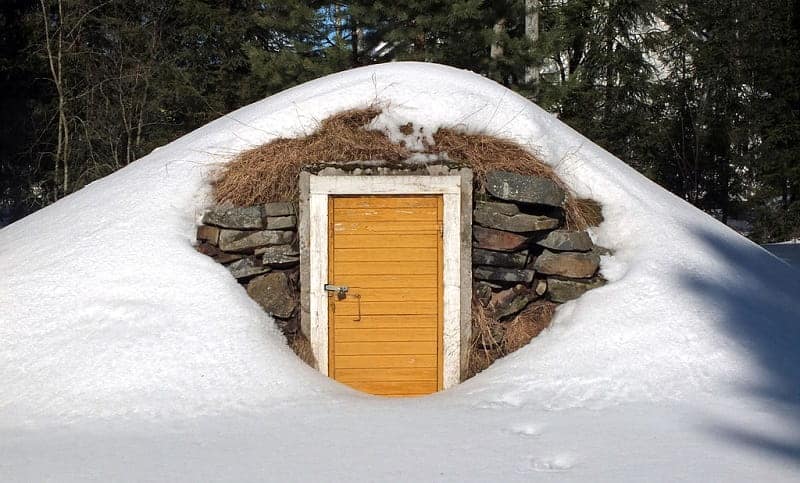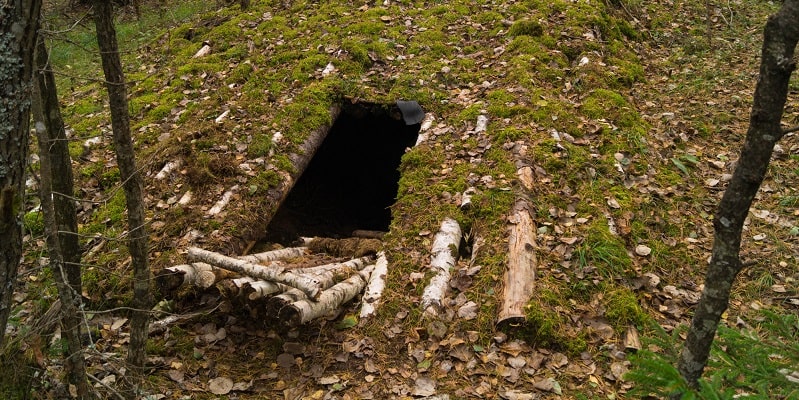As climate change and global unrest promise more local and global catastrophes so, more people are considering having a subterranean world to escape to.
Although you can buy ready-made underground bunkers, these are often prohibitively expensive. Designing and building your own is a cheaper option and one you can achieve relatively easily, provided you can come up with some viable plans.
There aren’t a lot of underground bunker plans available for free, but you can get some useful ideas from companies manufacturing bunkers or using the plans for old bomb shelters and root cellars as a basis for your design.
Underground Bunker Plans
#1 Septic Tank Design
A concrete septic tank makes a sturdy base for a basic underground shelter and is cheap and comparatively quick to install.
Around 20% of all the homes in the US already have a septic tank installed, but that doesn’t help. If your septic tank is already trapping and filtering your toilet waste, you can’t go and live in it, but you could install another one as your purpose-built backyard bunker.
The most popular 1,500-gallon septic tank measures around six feet wide by 10 feet wide, giving you approximately 60 square feet of floor space. As you need around 10 square feet per person, this would give you a bunker big enough to house up to six people.
To make an underground bunker using a concrete septic tank, you can either order a pre-cast tank from a reputable manufacturer or build your own.
The average cost of a 1500-gallon pre-cast concrete septic tank is approximately $1,590, which is a lot cheaper than the average underground bunker. To give you a clearer idea, this 8’ x 12’ mini bunker carries a price tag of $45,500!
While you’ll struggle to transform a septic tank into luxury underground accommodation, you can make it safe and survivable.
To make the bunker safe, you need to add insulation and ventilation, but both these steps can be completed relatively easily using polystyrene insulation panels and 12v computer fans.
You can also install a basic plumbing system and lighting to make your underground experience more comfortable.
#2 Root Cellar Bunker Plan

It’s not only fruit and vegetables that can prosper in a root cellar – humans can also survive down there for months at a time. Our previous article on root cellars gives lots of useful planning advice and explores the pros and cons of various designs.
You can also find some useful root cellar plans here.
With a little imagination, you can convert a basic root cellar into an underground or backyard bunker that offers a safe retreat when disaster strikes.
#3 Below Ground Corrugated Steel Culvert Shelter
This plan for an underground steel bomb shelter dates back to 1962 and was created by the US Department of Defense. In its entirety, the document contains eight different types of shelter, each of which was designed “for use by families who do not have access to community shelters.”
This shelter provides “fallout protection” against any radiation following a nuclear attack and is fire resistant. It’s designed to accommodate three people, but at a stretch, could house a family of four for at least a couple of days.
Read more about how to find your nearest fallout shelter.
This design uses a pre-fabricated steel culvert, a little like those manufactured by Atlas Survival Shelters. Unfortunately, prices have changed a bit since 1962 and what would have once cost “$150 or less” will now cost around 10 times more.
You can create your own steel bunker using a 48” culvert pipe, but you’ll need a high-quality product if it’s to withstand the weight of the earth you put on top to conceal the bunker.
#4 Concrete Underground Shelter
A concrete underground bunker offers excellent protection against radiation, fire, and explosive shockwaves. To be effective, you need the walls of your bunker to be between one and three feet thick, which is going to increase your costs significantly.
Your underground bunker also needs to be about 10 feet underground if it’s to offer protection against a nuclear attack, so it’s no small undertaking.
The best way to approach a project of this size is to keep your plan as simple as possible.
This is a good example of a basic plan for a concrete underground bunker. It’s similar to the pre-fabricated nuclear bomb shelters available online but should cost a lot less than $80,000 to construct.
#5 Wooden Underground Shelter
This video may be old, but it gives some very useful insights into designing and constructing an underground shelter out of wood. A concrete foundation gives the structure strength and integrity, while the wooden stud walls support the sides of the bunker.
Once complete, four people can squeeze into this underground bunker but probably wouldn’t want to stay in for more than a night or two.
#6 Brick Underground Shelter
Another offering from the Department of Defense, this one is made of brick and structural clay masonry units.
Ideally built as part of a new house, this underground bunker can accommodate up to six people and should, if built correctly, last up to 30 years.
#7 Steel Bunker
This unusual series of videos was created for British television and gives step-by-step insights into building your own stainless steel bunker.
From the stainless steel sheeting used for the sides to the reinforced roof supports, it shows you how you can construct something very similar to an underground shipping container but far safer to utilize as a survival bunker.
Conclusion
This article is designed to help you find a basic plan for your underground bunker and make the initial decision about what materials you’re going to use to construct it.
Once you’ve decided on those, it’s time to read our article on cheap DIY underground survival bunkers.
This gives lots of useful tips on what your design needs to cover and some of the things that could go wrong if you don’t plan it right.
